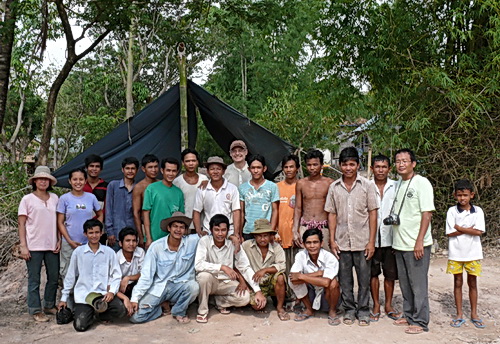Cambodian Authorities Rally to Protect Memot Historical Site
Researchers worldwide were shocked when bulldozers unexpectedly overran a 2500-year-old Memot historical site in Cambodia, a country that depends on archaeological assets to attract more than 2 million visitors each year. Government authorities reacted quickly to minimize the damage and prevent future accidents like this one.
Article by Kent Davis [Click here for Italian media coverage]
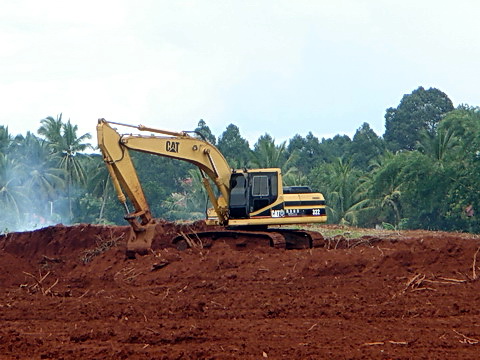
Memot, Cambodia – When archaeologist Heng Sophady arrived at the 2500 year-old prehistoric site he was stunned to find the area leveled, with bulldozers still pushing dirt that only a day before held clues to Cambodia’s history. Local contractors ordered the land clearing, unaware of the irreplaceable history that lay beneath their feet.
![Memot-Historical-Site-Map Prehistoric sites in Southeastern Cambodia are filled with details about the country's distant past [Memot historical site].](http://www.devata.org/dat-devata/uploads/2010/09/Memot-Site-Map.jpg)
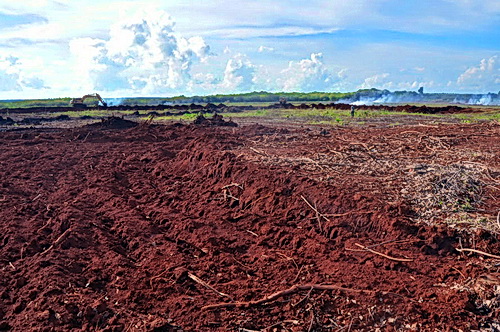
On September 2, Mr Heng received an urgent call with news of the destruction. He quickly rushed to the scene but the damage was already done. Mr Heng quickly contacted authorities in the Ministry of Culture and Fine Arts who were quick to respond. Ministry officials immediately scheduled an emergency meeting to review Mr Heng’s field report and authorized him to meet with the Director General of the Memot Rubber Plantation, which manages large tracts of land for its operations (see map below).
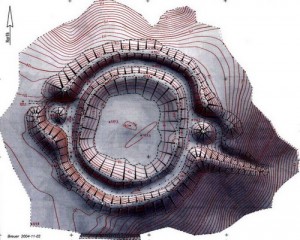
The Memot Rubber Plantation Director General told Mr Heng that they were never informed about the Samrong Earthwork, or such work would have never taken place. He also said that the 69 square hectare Samrong site (about 171 acres) no longer belongs to the company, but was transferred to the Royal Government for development of new village through a project of the National Divestment Committee.
In further on-site meetings, Mr Heng found company officials cooperative and a number of positive outcomes ensued. First, Mr Heng determined that while the earthwork surrounding the prehistoric village was destroyed no deep excavation had yet taken place. This meant that the deeper “inner platform” of the mound, which holds the most significant archaeological evidence, was undisturbed.
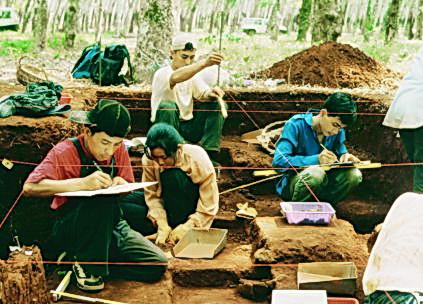
The village school buildings that were planned for the Samrong Earthwork site will now be shifted to avoid covering this key area, which will be designated a “green zone” preserved for future investigation. The company agreed to work with Mr Heng’s team to clearly designate boundaries of other prehistoric sites and add concrete markers for clear identification. The company will also help install permanent signs for ancient sites on private land, once permission to place them is obtained.
As a developing nation, Cambodia’s rapid infrastructure expansion is challenging, but even the world’s largest industrial countries struggle to preserve historical assets in the face of progress.
Italian researchers, working in the birthplace of the Roman Empire and the European Renaissance, have shown particular sensitivity to the Memot incident. Commenting on Italian interest in this situation , Mr Enzo Di Gesù, media manager at Turin University’s Cultor.org, comments “Archaeology here is sacred”.
In Cambodia, archaeology is also sacred because the ancient sites and the ancestors they represent are still revered by modern people. Cambodian leaders have distinguished themselves by their quick response to this unexpected situation. By implementing pro-active solutions they are preserving a source of pride for the Cambodian people and a cultural asset that will continue attracting visitors and scientists from around the world.
Memot Historical Site UPDATE – Oct 1, 2010
Mr. Heng Sophady reports from Cambodia that he met with the Minister and high officials in the Ministry of Culture and Fine Arts with very positive results.
The Minister is very interested in protecting circular earthwork sites and he sent letters to the Council of Ministers, the Ministry of the Interior, the Kampong Cham Governor, the Kratie Governor, the Ministry of Agriculture and the National Committee for Divestment to notify them of the accidental destruction of the Samrong Circular Earthwork through a government development project.
The minister requested their awareness and help protecting other prehistoric sites in the Red Soil Region of Kampong Cham and Kratie.
Agencies must now inform the Ministry of Culture before beginning construction operations in these areas. The Ministry of Culture will then be able to determine if any archaeological sites exist before operations begin.
In further positive news, the Memot Rubber Plantation has offered to make concrete identification signs to place at all 26 circular earthwork sites located in Memot.
He is now contacting officials with Krek and Snoul Rubber Plantations asking for their cooperation and help with similar identification markers.
The signs will help local people and authorities recognize the sites and help them understand their importance to Cambodian heritage.
Related Memot Articles
Bulldozers Destroy Priceless Archaeological Site in Cambodia (Original article)
Il governo della Cambogia intervienea difesa del sito archeologico distrutto [The article above in Italian]
Archaeological Site Destroyed in Cambodia – SEA Archaeology Newsblog
Memot (Cambogia). I Bulldozers Distruggono Un Inestimabile Sito Archeologico (Italy)
Distruggono un inestimabile sito archeologico in Cambogia Cultor.org Report (Italy)
Antikitera.Net – News di Archeo/Scienza Cambogia (Italy)
Information about Cambodian Archaeology
Memot Centre for Archaeology Home Page
Memot Museum Support from Friends of Khmer Culture
Excavation at the Iron Age burial site of Prohear, Prey Veng province
The First Golden Age of Cambodia: Excavation at Prohear
